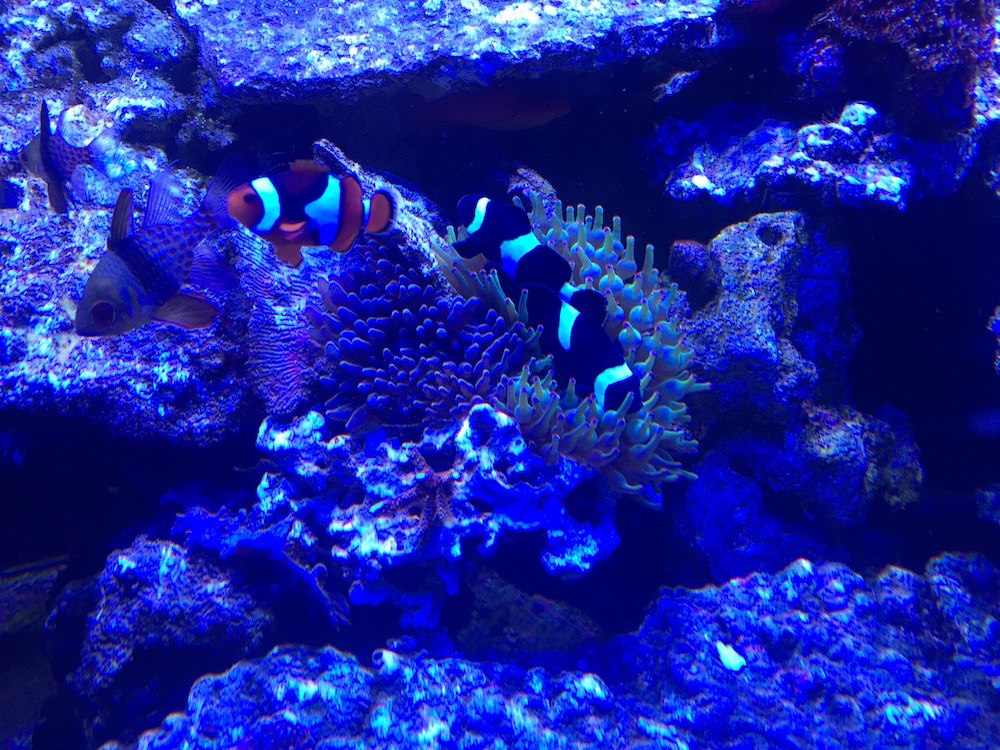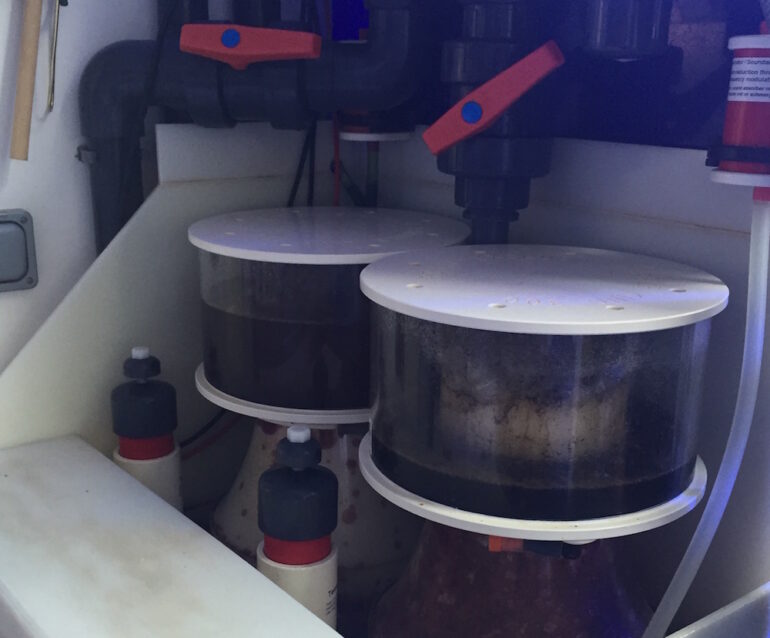Redundancy
We have all been admonished by the phrase at some point in our lives “Don’t be redundant. To most that simply means don’t say something twice. By definition it also means don’t exceed what is necessary or normal. While this may be useful in writing or speaking I have found that being redundant or having redundancy when setting up a reef tank can be a really good idea. In fact, for just about every critical system in my tanks I now try to employ as much redundancy as possible. I do this for several reasons.
First, I do it as safeguard to try and reduce the likelihood that a catastrophic event will befall my tanks. I also do it to prevent or reduce one of my stupid actions from wiping out a tank. And lastly I do it so that when I am traveling, which I do frequently, the redundancy employed provides me some peace of mind.
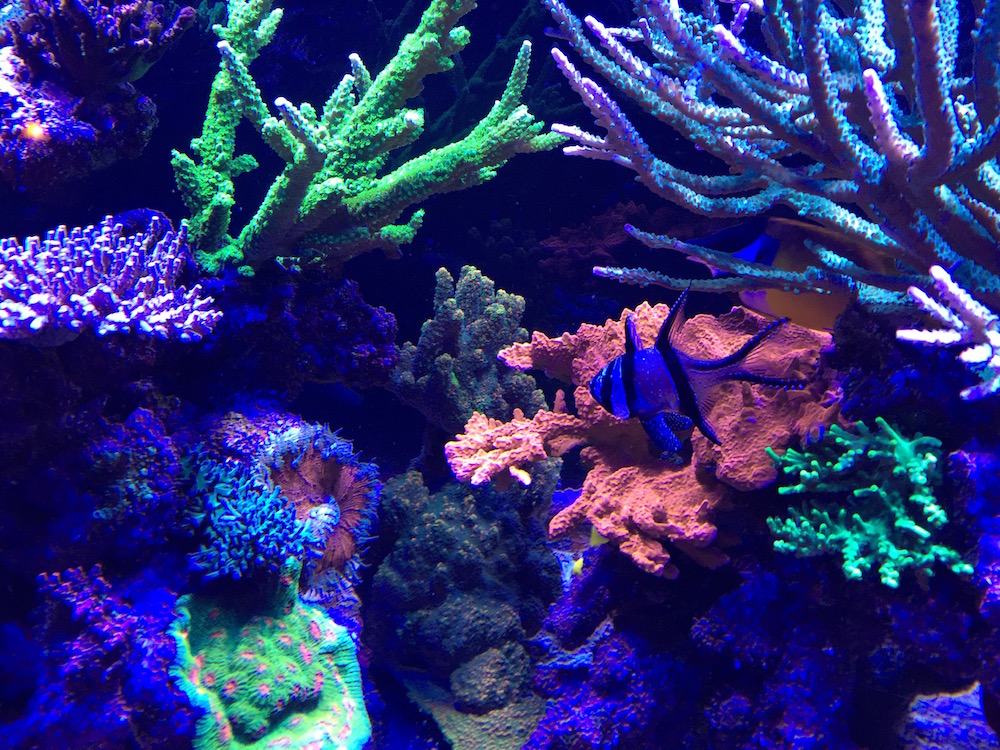
So what exactly is redundancy and how is it employed when setting up a reef tank. In the simplest terms it can just be having an extra piece of equipment on hand to replace one should and when it fails. Not to be a negative nabob, but eventually, all equipment on a reef tank fails. Whether it is a return pump, powerhead, air pump, light or even the tank, all equipment fails.
In order to reduce the chances of a failure from producing a possible catastrophic event I employ redundancy by having a replacement for each of these pieces of equipment at the ready.
This may seem an expensive luxury, but what would be more expensive: having an extra $300 return pump sitting in a closet, or having to replace the contents of your sps tank? Needless to say, if you can prevent the loss of even a single expensive frag having a back-up is more than justified. And remember as I said, all equipment eventually fails so you will eventually need it at some point anyway.
Overheating
Having back up equipment is the simplest form of redundancy, however, like I said I employ redundancy in my tanks wherever I can. The first place I ever employed redundancy was after a heater of mine had stuck in the on position and cooked my tank and its expensive contents. After that I have always employed 2 or more lower watt heaters in every tank rather than just employing a single high wattage heater.
The reason for this is simple: if one of these smaller heaters get stuck it is not powerful enough on its own to overheat the tank. Whereas if the high wattage heater sticks it can cook or in the best case scenario just overheat the tank enough to stress the fish and corals. So by employing this strategy, the likelihood of a tank overheating is greatly reduced.
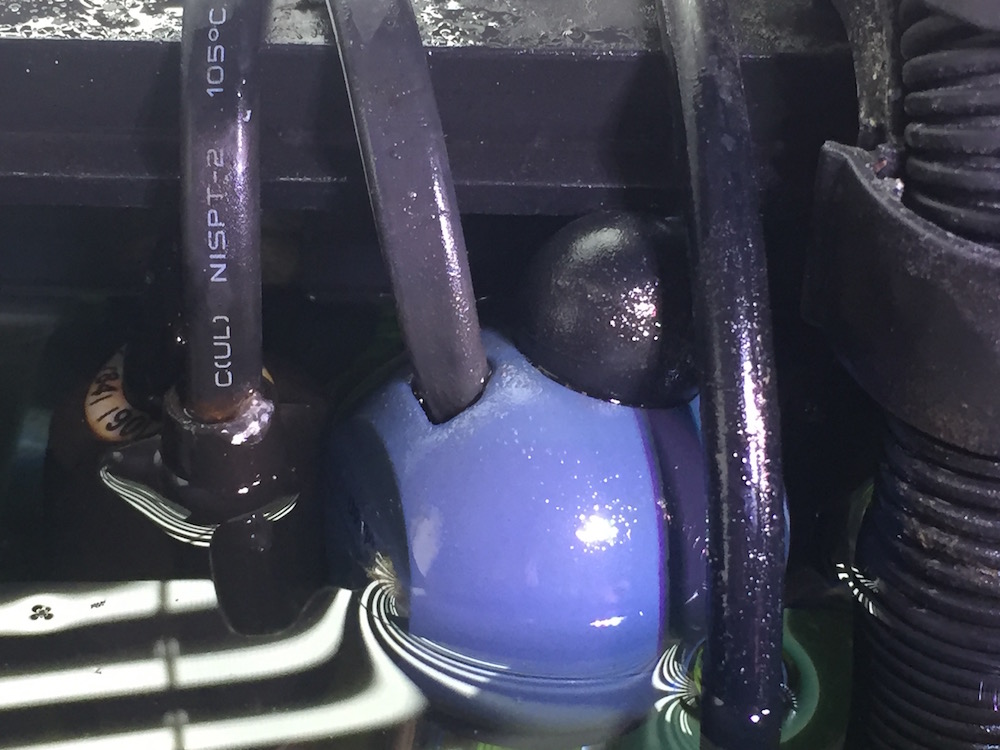
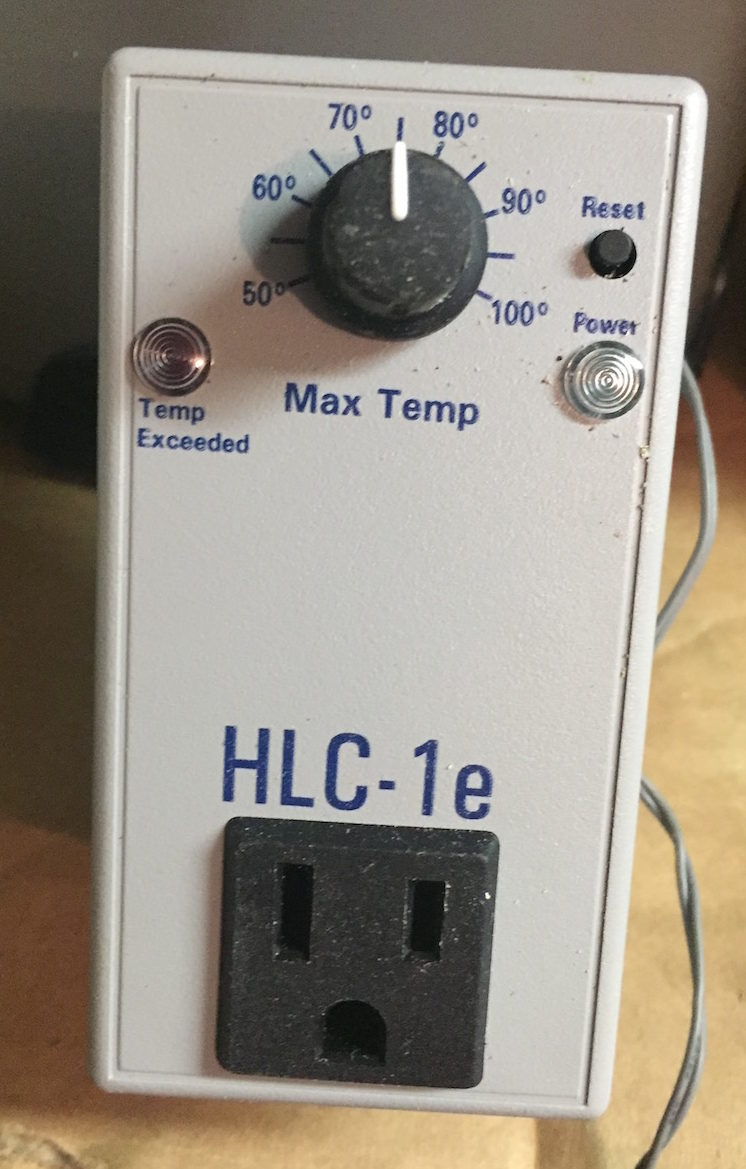
However, to me this was not enough. So in addition to this first level of redundancy I employ a second level of redundancy by having as many heaters as I can be attached to a separate thermostat. By using the thermostat the likelihood of catastrophic overheating is reduced even further as it would take all the heaters to stick on and for the thermostat to fail for this to occur.
While this may seem like overkill, I have lost enough fish and corals from overheating as well as seen other’s lose tanks for similar reasons that I feel that this small expenditure is more than worth it.
In addition to reducing the likelihood of overheating due to heater malfunction, I also employ redundancy to keep my tank from overheating for other reasons. To do this the controller on my tank is set so that should the water in the tank exceed 82 degrees, the lights will shut down as they are connected to a dedicated circuit that shuts them all off when this temperature is reached. Thus the second most likely cause of overheating in my tank has been eliminated. But again I have taken this one step further.
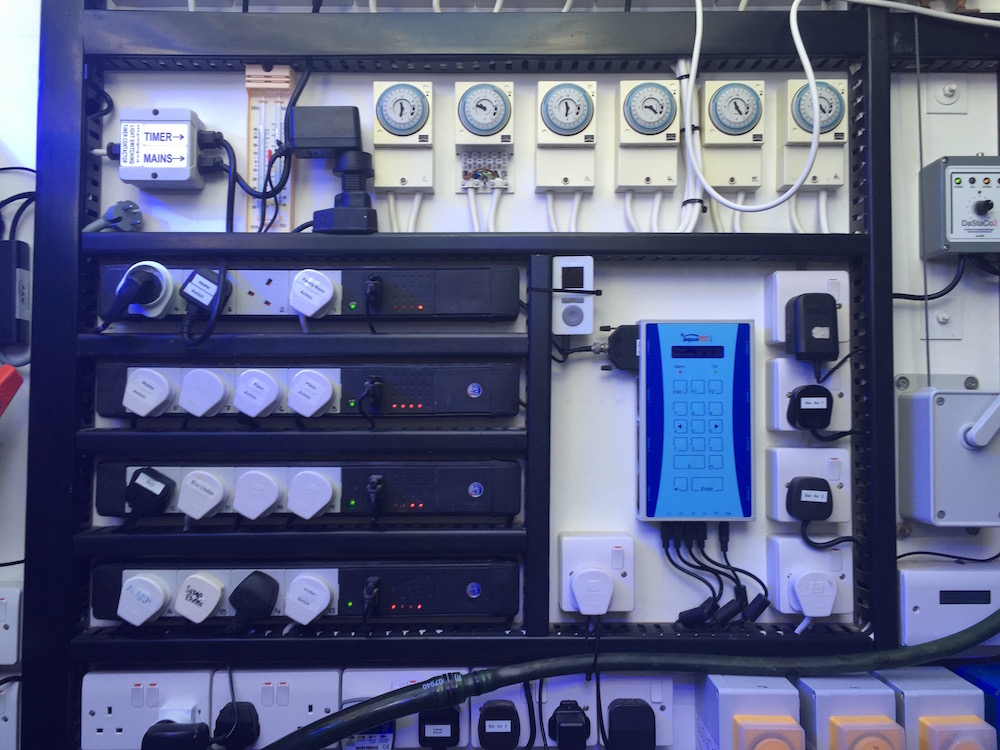
In addition to the lighting being shut down when the tank gets too hot, a cooling circuit triggers and two fans blow across the water in the sump when the water in the tank reaches 80 degrees. In this way cooling starts to occur well before the lights kick off.
Lastly there is also an exhaust fan that kicks in not only when the humidity gets high, but also when the room or water temperature reaches 81 degrees. This fan rapidly exhausts the room and the air that it draws in comes from the much cooler basement garage.
By cooling the room as well as the tanks in this way I have not had to employ an expensive chiller at any time in the past 5 years. So while this system may seem extreme and expensive, it actually cost less than $150, it is much less expensive than a chiller both in terms of cost and the cost to run it.
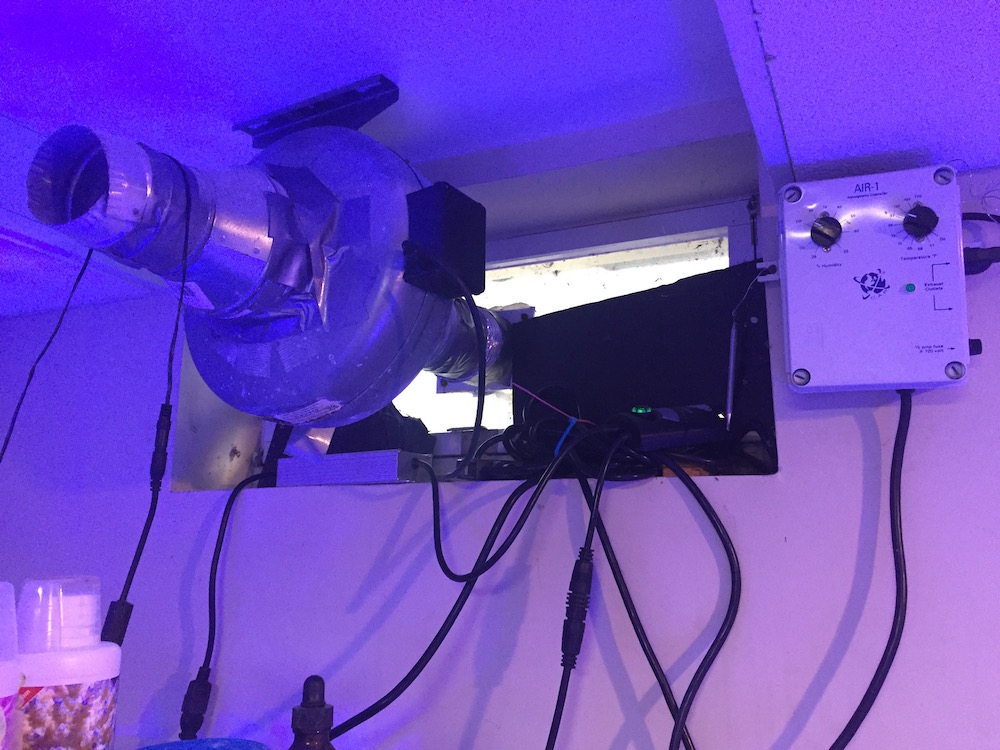
Overflow
In addition to this heating and cooling redundancy, redundancy is also employed on the overflows in my tanks. For my tanks that are drilled, overflows are employed in each corner to move the water to the sump.
This was part of the tank design to allow for the flow to continue even if one of the overflows got clogged or blocked. Similarly, on my tanks that are not drilled but that employ overflow boxes, two boxes are employed so that water flow will continue even if one of the boxes stops functioning or loses its siphon.
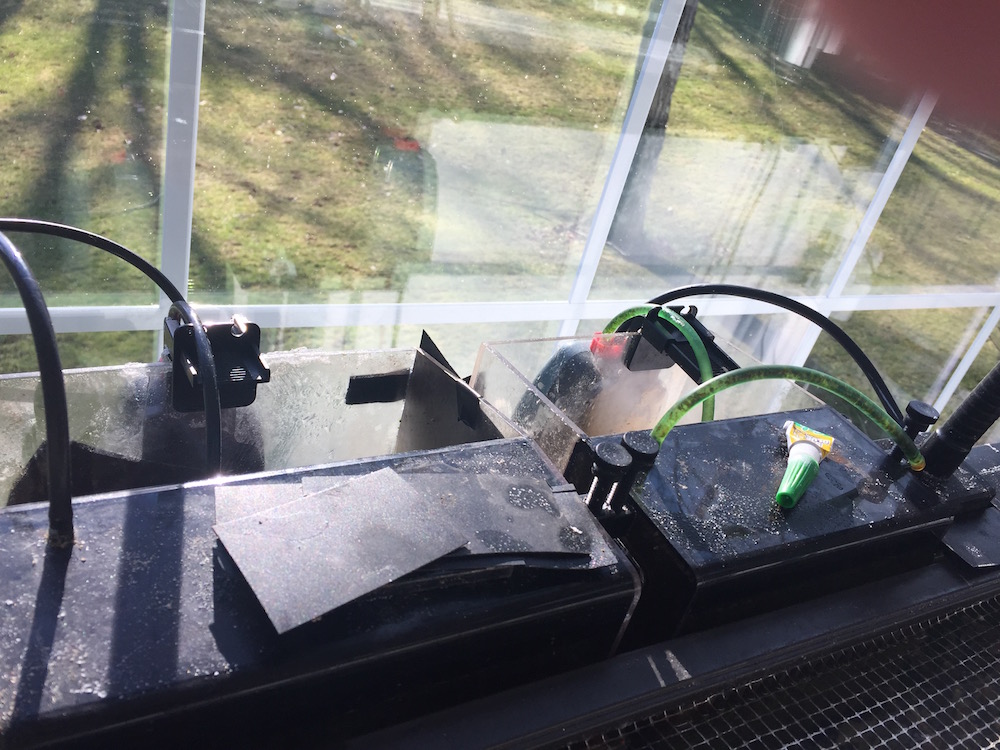
In addition, each of the boxes employs its own hobby pump to draw air and dirt out of the top of the overflow box so that the siphon within these boxes is never broken.
In the relatively short time I have employed this system, having two instead of one overflow box has saved me not only worry, but also has kept flow going on numerous occasions after one of the boxes had lost its siphon. This has kept the carpet in that room relatively dry as a result, which is always a good thing.
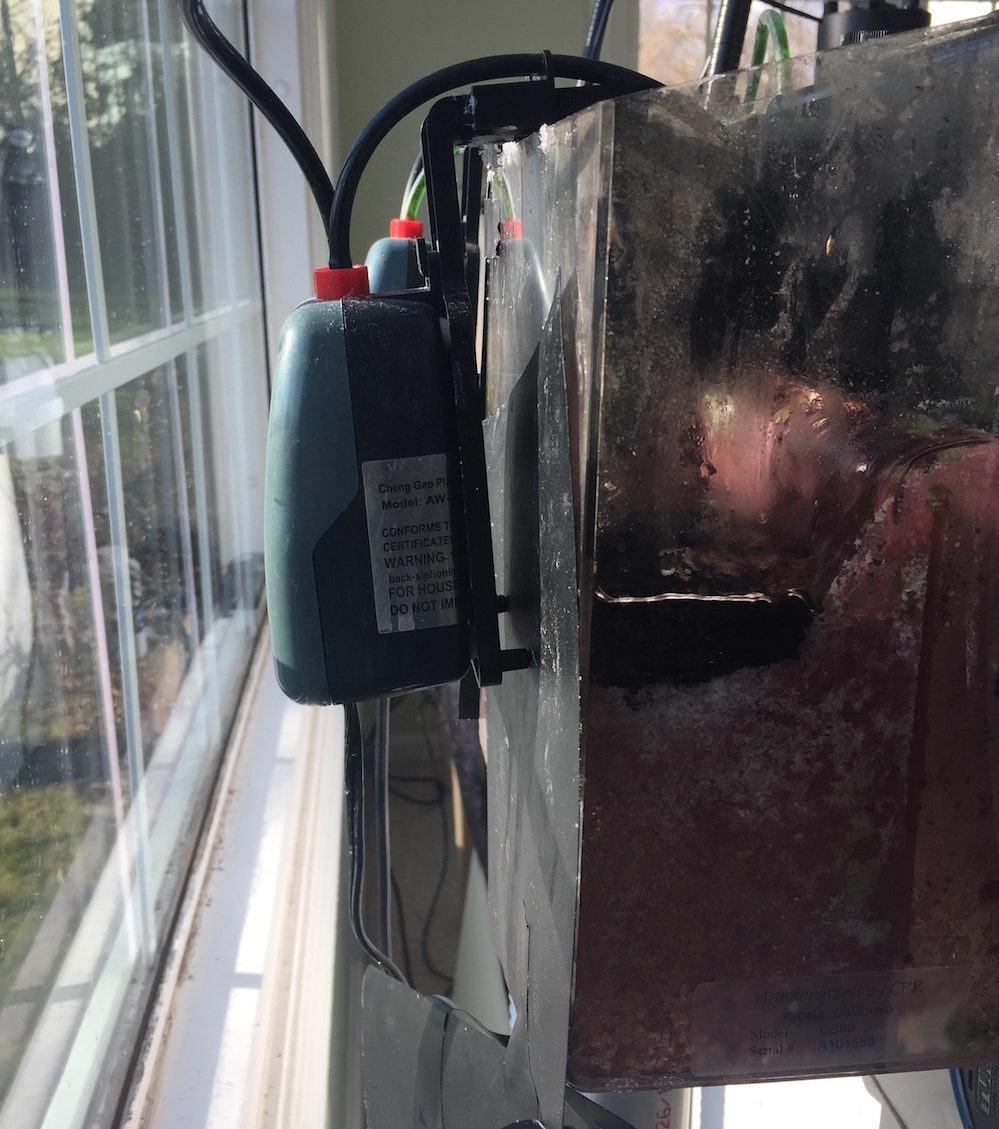
Skimmers
While this kind of redundancy is simple and relatively inexpensive, I have seen redundancy employed on a couple of European tanks that was not. On these large tanks the owners employed dual skimmers on their tanks in what I consider a brilliant use of redundancy. By doing this they first of all allowed for there to be skimming occurring even when one shut down for whatever reason whether it was mechanical failure or simply offline to be cleaned.
In addition, it produced another interesting result. One of the skimmers was set so that it “wet” skimmed while the other was set to extract much drier foam. By doing this it was thought that different types of skimmates were being taken out making the whole system more efficient. This may or may not have been true, but the health of the fish and corals as well as the clarity of the water clearly indicated that using this type of redundancy did produce some dividends.
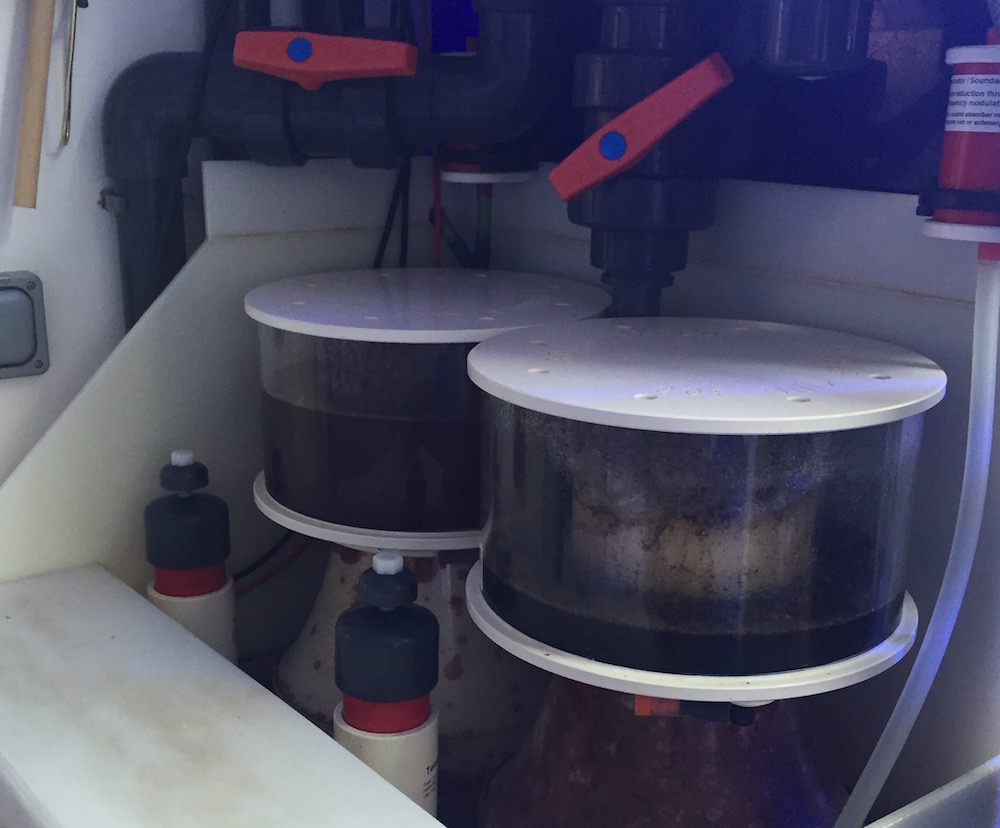
These owners also employed redundancy not only on the skimmers but also on the scum cups. As many of us who have big skimmers know from time to time a skimmer will overflow, with one of these time often occurring after a power outage. This occurs as the water in the sump typically rises during an outage. Then when the power turns back on the this higher water level causes the skimmer to overflow dumping all of its nasty contents back into the tank.
To reduce the likelihood of this happening these tanks employ one way valves to keep the water from draining from the tank so that the skimmer will not overflow once the power comes back on. However, this is not enough as in addition to this these owners also employ a delay timer that only kicks on 15 minutes after the power comes back on. By employing this level of redundancy the likelihood of a skimmer overflowing is greatly reduced along with the mess that can bring.
Tank Design
Another form of redundancy that is probably not thought of often enough is to have a redundant bottom on a tank. In some of the European tanks I have seen in addition to having the normal glass bottom a second glass bottom is glued into the tank right above that bottom. Doing this not only strengthens the bottom of the tank, but it strengthens and adds to the integrity of the tank throughout.
When I built my own 1200-gallon tank I glued four-inch wide and half-inch thick glass strips all around the inside glass walls of the tank, both at the top and at the bottom. I do not know if it added to the strength of the tank, but the tank is now still set up after having been moved across the country now some 17 years after it was built.
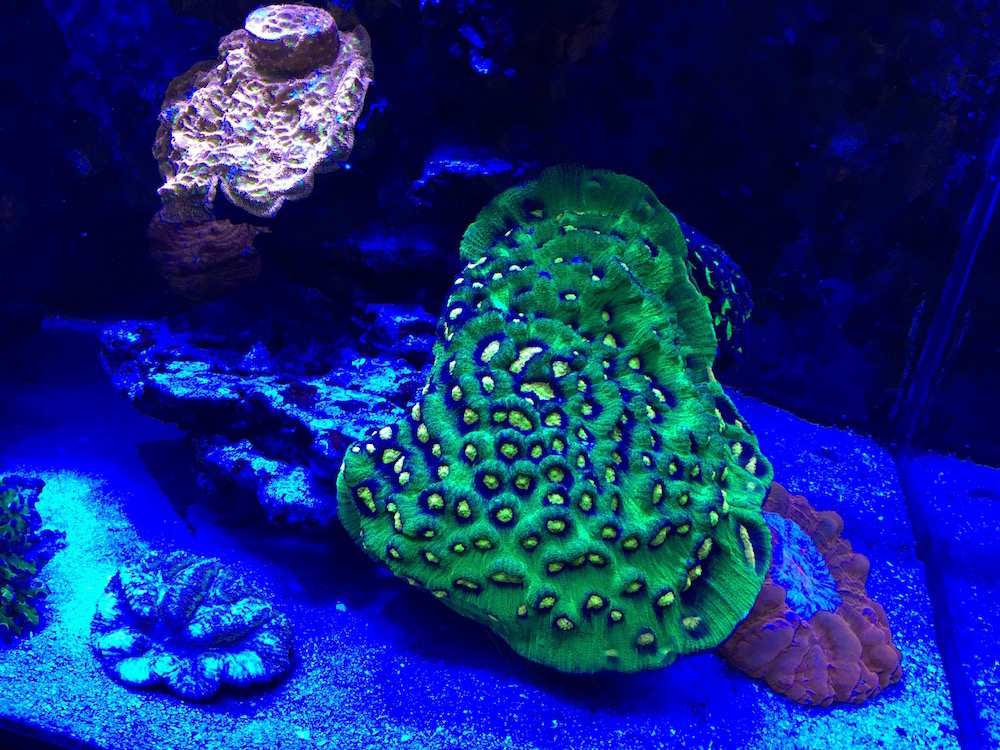
In addition to this extra reinforcement on my tank, on a couple of my tanks I have added a second bottom made of to not only cover the bottom, but also to protect it should something drop. This extra layer of material is relatively easy to clean and after having dropped a couple of pieces of live rock over the years and cracked the bottom glass, this redundant bottom has provided significant protection for the tank
Top Off System
While each of the above described redundant techniques can save a tank and are relatively simple and were put into place after problems I had seen, another system I employ using redundancy requires a little more effort and thought and luckily I employed it before it happened to me.
Most people I know have some form of top off system on their tank to replace water that has evaporated with freshwater, usually RO/DI. And for many of us, this freshwater reservoir fills automatically when it is depleted with new water. Fortunately, this system usually runs smoothly and there is no problem. However, I am sure we have all heard or know someone that has had a calamity as a result of this system running amok.
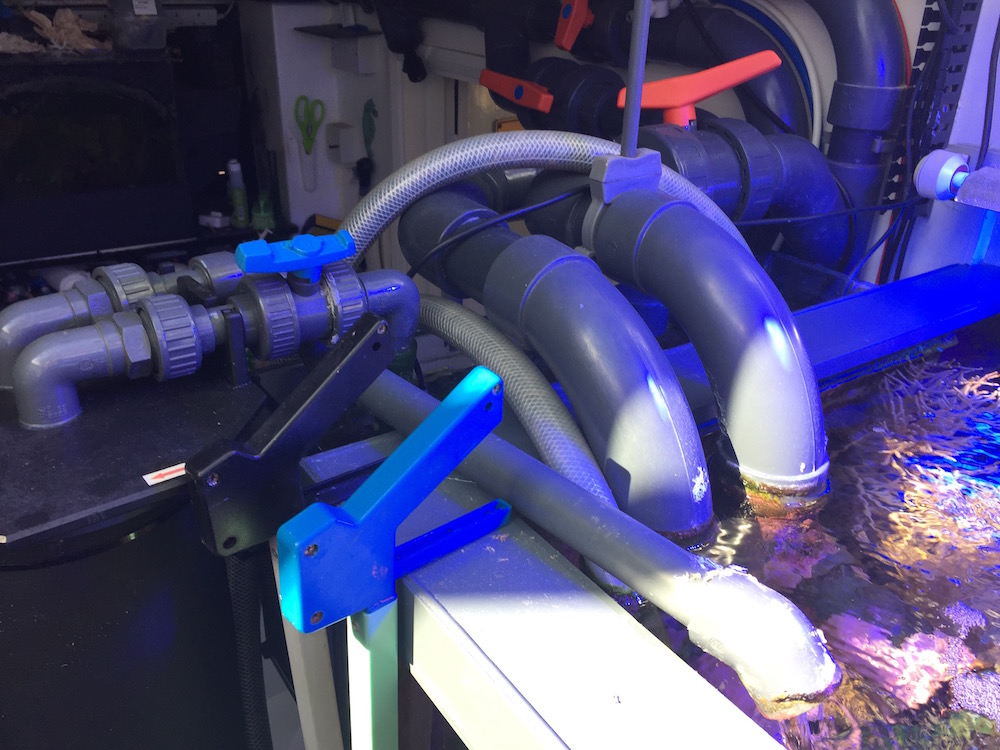
When this happens the top off reservoir and replacement system does not stop, so over a seemingly short period of time, replacement freshwater floods the tank and the salinity drops precipitously which can kill the corals and fish. So in order to prevent this from happening I employ two additional measures. In the first of these the Tunze osmolator top-off system is connected to a float switch that shuts it off should the water level ever get too high. While the Tunze Osmolator itself employs an infrared sensor to do this the float switch shuts everything off should the water level rise much above the sensor. This keeps the salinity from ever dropping even a relatively small amount.
In addition to this, the water replenishment system that fills the reservoir is on a timer. The timer is set so that the solenoid will only come on for enough time to fill the reservoir with enough water to make up for what usually evaporates in a day. This is done so that if a catastrophe occurs and the reservoir drains completely it won’t fill continuously and thus flood the house, drop the salinity to dangerous levels and kill the tank. This may seem a bit extreme but it actually is not very expensive and after hearing about so many people losing their tanks due to a top-off system mishap I feel much better knowing that this is in place.
Drop Cam
Another piece of redundancy that I employ on my tank is one that provides peace of mind that previously was lacking for me. If you are like me, when you are traveling you employ or engage someone you trust to watch your tank and feed your fish etc. Usually this person that you engage has little to no experience taking care of fish. So while I now measure everything out that he needs to be added and also write everything down I have found that despite this mistakes still get made.
So in order to get the peace of mind I need a camera that I can watch over the net is mounted so that I can watch my tank any time I want, even when he is feeding or adding things to my tank. As a result, I can now make sure everything is where it should be in the tank and that he is doing exactly what I want.
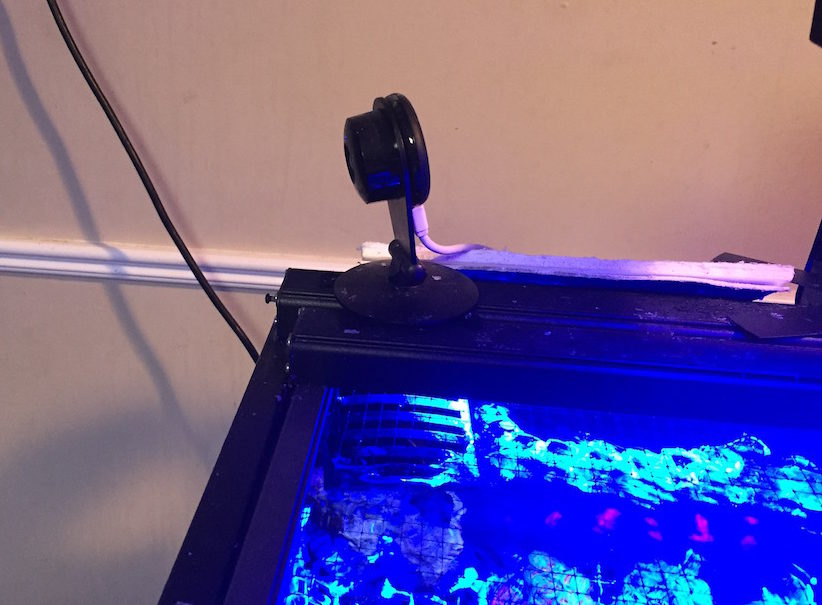
Fortunately, the price of these cameras have come down markedly over the past few years so they are as inexpensive as a moderately priced coral frag. I know some would employ this camera in other areas of the house rather than on their tank if they got one, but to me the peace of mind this has given me makes it one of the best ways I’ve added redundancy to my tank to date.
Water Testing
Lastly, I also employ redundancy in a few other ways as well that are often overlooked. For testing the water, I usually employ kits from two different manufacturers to verify that the results are accurate. I then further check their accuracy by sending them in to Triton for ICP testing. I know this may seem unnecessary but again to me it provides peace of mind. Similarly when I feed my corals I use a couple of different foods.
This is done as I am still not convinced that one food will provide for all of the different corals that I have so by using more than one I feel that more of my bases are covered. And lastly when I get new corals they get a double dip before they are added to any tank. This redundancy is done so that if one dip misses a pest the second will likely get it. Yes I know that for the most part nothing kills eggs, and while I visually inspect each coral I also try to keep it away from other corals when I add it after dipping and then 5-7 days later it gets a second dip. Again redundancy in the hope of preventing future problems.
Spare Parts
Having redundant systems on a tank or even having redundant spare pieces of equipment may seem like a luxury, but to me the peace of mind that they provide is well worth it. Anyone who has been in this hobby for any length of time has undoubtedly heard a horror story about how someone lost their tank due to not being prepared or due to something as stupid as a snail getting stuck in an overflow which shut it down which then led to the tank overflowing which then caused the reservoir to fill the tank with freshwater or something like that.
So considering how much time and effort we put into most things in this hobby I think putting redundant systems in place to prevent these kind of events from happening is well worth it. If you do nothing more than preventing your rug from getting saturated that would be enough, but when you consider that doing so may save your tank, you quickly realize it is not a luxury to do so, but a necessity.
